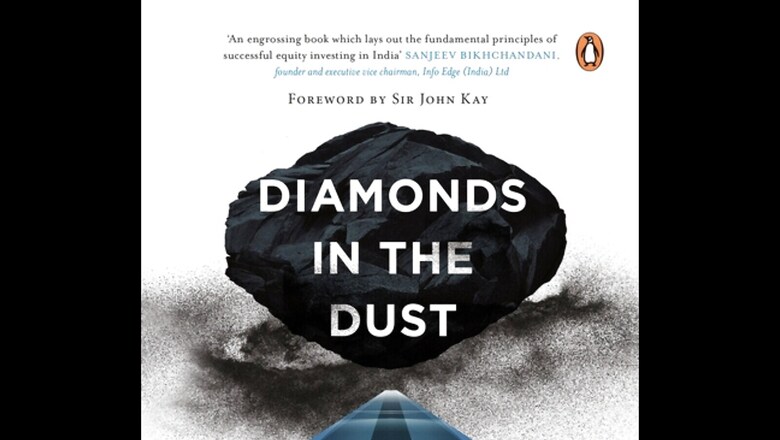
views
Myth 1: Gold Will Help Me Protect My Wealth
As mentioned earlier, an RBI report found that next to real estate, gold, at 11 per cent, accounts for the largest share of the wealth of Indian households. An 11 per cent allocation to any asset is a reasonably large chunk by any standard. How has such a material asset allocation worked for Indian households? Over the last ten/twenty/thirty years, the price of gold (in rupee terms) has compounded at an annualized return of 9.2 per cent/12.7 per cent/9.3 per cent, respectively.
Over the same time periods, an investment in the equity markets, represented by an investment in the BSE Sensex index, retuned 10.4 per cent/15.0 per cent/14.8 per cent, respectively, higher than gold in each time period. If we consider returns from gold in each of the three decades separately over the last thirty years, we see that gold has underperformed the Sensex by a wide margin. In the decade 1990–2000, gold prices grew at an annualized return of just 2.8 per cent, not even beating inflation. The narrowest margin by which gold underperformed was in the decade of 2010–2020, when gold prices compounded at 9.2 per cent per annum, against 10.4 per cent of the Sensex. However, in this decade, gold prices were more volatile (measured by the standard deviation) than equities, suggesting that on a volatility-adjusted basis, there wasn’t a compelling reason to own gold.
Even though gold does not fetch returns superior to equity, it could improve the risk-adjusted returns of your portfolio if it were negatively correlated to equities (thus allowing you to diversify your returns). The widespread public perception is that gold is negatively correlated to equities. However, the data on this is actually mixed. Whilst gold has been negatively correlated to the Sensex over the past ten years, over longer periods of time, namely twenty and thirty years, the negative correlation drops away and actually becomes a mild positive correlation. This means that over the last twenty-year and thirty-year periods, the prices of gold and the BSE Sensex have moved more or less in tandem. Further, if we break down the last thirty years into three decades, we see that gold has, for the most period, been positively correlated to equities. This means that using gold as a diversifier of wealth also does not work consistently. On the whole, it is difficult to make a case for gold forming a significant part of the portfolio of an Indian investor.
The RBI report referenced above also corroborates these findings and makes a case for reallocation of wealth from gold to other financial assets. The reports states:
For households that hold more substantial amounts of gold, i.e., those in the top third of the cross-sectional distribution, the ongoing annual income gain from re-allocating a quarter of their gold holdings to financial assets is 3.4%, which when capitalised, translates into an upwards movement of roughly 5 pp along the Indian wealth distribution. These projected gains are almost always above zero, even when we account for volatility which may lead to different realisations of returns on gold and financial assets.
Myth 2: Real Estate Will Help Me Grow My Wealth
Over the last five years, if one were to look at the return rate from real estate in metropolitan cities in India such as Mumbai, Delhi and Bengaluru, one would see that returns have been around 3-4 per cent per annum; i.e., house prices have at best kept pace with consumer inflation. Real estate in major markets like the National Capital Region has not even accomplished that.
However, there is a school of thought in India which says that because residential real estate returns have been weak over the last five years they will be better going forward. This point of view cannot be sustained when one compares Indian house prices with the prices prevalent in other markets. The first problem is affordability. Indian residential house prices, expressed as a proportion of GDP, are 6-10x the prices prevalent in some comparable Asian economies.
Secondly, Indian residential rental yields are around 2-3 per cent in most Indian cities, whereas the cost of a home loan for prime residential real estate customers is around 7 per cent. The disparity between these numbers suggests that Indian residential real estate still has room to correct from its highs before it becomes an attractive asset class.
Thirdly, comparing Indian residential rental yields with yields in other countries suggests that the Indian residential property market is significantly overvalued. Other markets whose rental yields are comparable with India’s—say, Singapore and the USA—have costs of borrowing in the range of 2-3 per cent. In contrast, as mentioned above, in India, the cost of a home loan for even a prime customer is much higher, around 7 per cent. In fact, the cost of a home loan in India is significantly higher than it is in Indonesia (7 per cent vs 5 per cent), even though rental yields in Indonesia are much higher than in India. Clearly, investing in real estate in India does not make much economic sense. Add to it other factors—such as high transaction costs (broking, stamp duty, etc.), illiquidity (your property is pretty useless in funding emergency cash calls) and the lack of transparency in finding the true value or price—and investing in real estate becomes cumbersome and risky.
This excerpt from Diamonds in the Dust: Consistent Compounding for Extraordinary Wealth Creation by Saurabh Mukherjea, Rakshit Ranjan and Salil Desai has been published with permission of Penguin Random House.
Read all the Latest News, Breaking News and Assembly Elections Live Updates here.



















Comments
0 comment